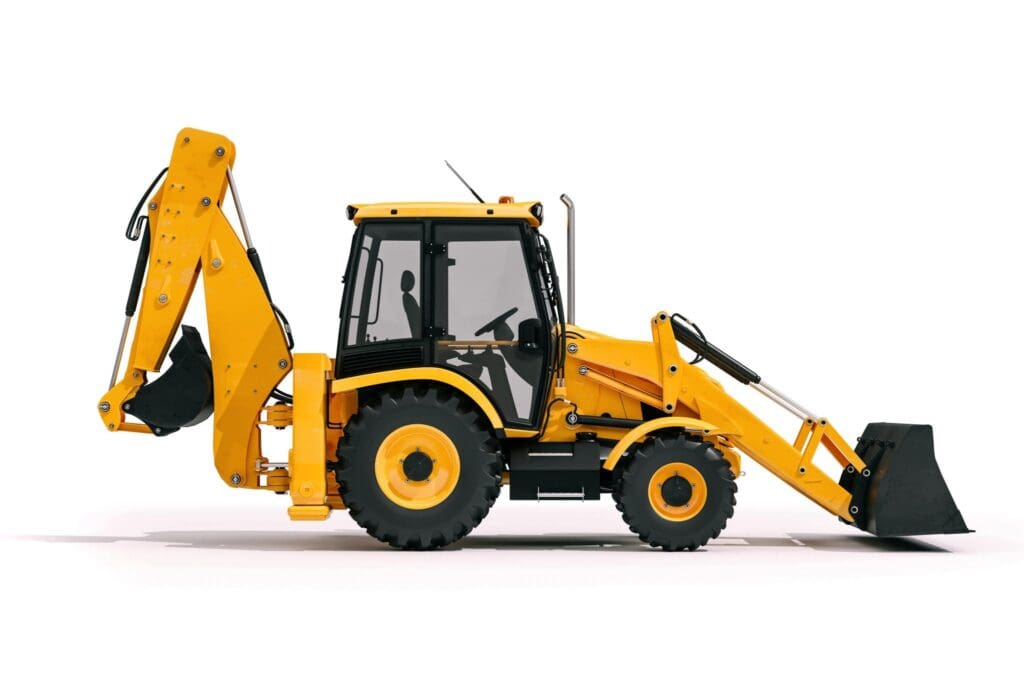When construction crews need to accomplish landscaping tasks such as clearing trees, creating small ponds, or moving topsoil, they use a backhoe loader. These versatile machines are great assets to practically any construction.
Thinking about a career in construction? The construction industry is full of opportunities for those with the right training and certification. Attaining proper training doesn’t just set you up for success in construction but gives you a better understanding of the machinery and equipment you’ll operate. Ultimately that will help you maintain a safe work environment.
Learn more about safety, how to operate it and the function of backhoe parts.
Table of Contents
Types of Heavy Equipment Used in Construction
On a typical construction site, you can find a variety of heavy machinery pushing, excavating, transporting, or hoisting materials. The specific job you need to accomplish largely determines the machines you’ll use. You’ll even find that different machines work in conjunction with one another to accomplish tasks. For example, an excavator or backhoe will dig up soil or other materials, pour that soil into a dump truck, which will unload the soil off-site.
What Is a Backhoe Loader and Its Function
A backhoe loader can accomplish various tasks ranging from uprooting and transporting trees to moving raw materials, gravel, boulders. How does this heavy equipment machine get each of these tasks done? This machine consists of four main parts: the cab, the tractor, the backhoe, and the front loader. Essentially, it offers many components but only requires a single operator. Depending on the task, the operator either uses the front loader to push and transport materials or the backhoe to excavate and dig.
Backhoe Parts and Their Functions
Each component of the backhoe loader serves a specific function. What makes it so versatile and valuable is that you can use it to dig and then use the front loader to transport the material. Let’s begin with going over the four main parts and their functions, followed by a breakdown of parts.
- Cab
The cab, located on top of the tractor, is where you find the controls for the front loader backhoe. Some cabs are completely enclosed by safety glass, while others use an open canopy structure to protect the operator. Inside the cab, an operator can monitor their entire surroundings from a safe position. The chair inside the cab can rotate, allowing you to switch from using the front loader to the backhoe easily. - Tractor
Without the tractor, a backhoe loader would have a difficult time maneuvering in terrain. The tractor consists of large tires, a cab, and a powerful engine. The main function of the tractor is to get the machine around the construction site. Once in position, the operator will park the tractor before using the backhoe or loader. - Front Loader
Whether you’re moving earth, pushing snow, or picking up debris and materials, you’ll use the backhoe’s front loader. A front loader is mainly just the large bucket used to move and transport materials from one spot to another. You might also find operators using the front loader to smooth out surfaces as well. - Backhoe
The backhoe excavates or lifts heavy materials. The backhoe portion of the machine consists of three main components: the boom, the bucket, and the dipstick. In order to use the backhoe, you must first park the tractor in a stable position using stabilizer legs. Then you can use the backhoe to dig up trenches, holes, small ponds, or similar applications. - The Boom
Located closest to the cab, the boom is the long piece of the backhoe arm attached to the tractor. The boom can lift, lower, or swing left and right. An operator controls the motion of the boom from the safety of the cabin. - Dipper arm
The other main part of a backhoe arm is the dipper arm. The dipper arm runs from the pivot to the bucket located at the end of the backhoe arm. The dipper arm stabilizes the weight of the materials inside the bucket. - Bucket
Located at the end of the backhoe arm, the bucket scoops and transports debris and other materials. When you want to scoop dirt into the bucket, you maneuver the bucket toward the dipstick. To empty the bucket, you move the bucker away from the dipstick.
Get Trained and Certified for a Successful Career
As useful as backhoe loaders and other pieces of heavy machinery are for construction, these machines do not operate on their own. For that reason, there will always be a demand for quality heavy equipment operators. If you’ve ever contemplated a career in construction or want to transition to a new career, programs at HEC can help you start. Our students have the advantage of receiving hands-on training from experienced instructors. On top of that, our programs can be completed in as little as three weeks! Get trained, get certified, and get in front of potential employers fast. There are HEC campuses located across the country; find one near you and get started on your path to a rewarding career.

